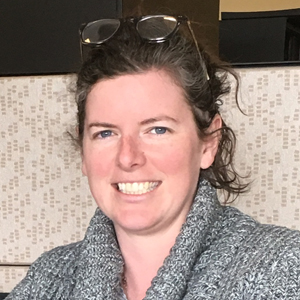A unique research opportunity
April 27, 2016
Share

Two Queen’s University PhD candidates have received a one-time $2,000 stipend from the School of Kinesiology and Health Studies (SKHS) to help support a once-in-a-lifetime opportunity to further their research.
For Jeremy Walsh, a fourth-year exercise physiology PhD candidate, the stipend means crossing an item off his “bucket list” while providing a chance to further his research on the effects of high-altitude, low-oxygen environments on cognitive functions.

“Visiting the Himalayas and Mt. Everest is the sort of thing that people at some point in their life would like to do,” says Mr. Walsh. “For me, it’s always been a cool idea but the opportunity has never come up. To have an opportunity to accomplish this goal, and have it align with my research, is really quite extraordinary.”
On May 5, Walsh and his co-researchers from Mount Royal University, University of British Columbia - Okanagan and University of Victoria will begin their 10-day, 62 km hike to Mount Everest base camp, which sits at an elevation of 5,360m. The team will conduct experiments at three different locations and elevations along the way to determine if exercise retains the ability to improve cognitive function of someone who is living in a low-oxygen environment for multiple days.
Prior research has shown that aerobic exercise can improve brain function for up to an hour after the exercise is completed. While hypoxic (low oxygen) environments have been shown to impair cognitive function in healthy adults, research has shown that performing 20 minutes of cycling while breathing low-oxygen air restored cognitive function to the same as sea level. Mr. Walsh and his colleagues hope to determine if the improvement is still noticeable when the subjects are living at altitude for a period of time, rather than simply exposed to short-term hypoxia.
Sarah Barnes, also a PhD candidate whose research focuses on how sleep has come to be seen as a significant ”natural” performance-enhancing strategy in elite sport, will be visiting the famed Harvard Fatigue Laboratory housed in the Francis A. Countway Library of Medicine at Harvard University.

Operating out of the Harvard Business School from 1927-1947, researchers studied working conditions, industrial fatigue and how subjects adapt to their environments. The lab also conducted a number of experiments on world-class athletes – the first lab to use athletes as subjects for experiments – to determine how exposure to extreme cold and elevation, intense exercise, or combinations of all three effected recovery.
“The Harvard Fatigue Laboratory laid the groundwork for the contemporary scientific management of sporting bodies, especially in relation to ideas and practices connected to fatigue and sleep,” Ms. Barnes says. “Having the opportunity to visit the lab’s archives and review the original research records, grant applications, and notebooks will allow me to chart how ’the athlete’ emerged as special type of human model in exercise science.”
This rare opportunity to access the lab will grant Ms. Barnes the opportunity to review original documents related to the lab’s activities — including professional correspondence and unpublished research records, lab reports, analyses, grant applications, notebooks and other writings. In doing so, she hopes to explore how these scientists studied fatigue and the assumptions that informed their work.